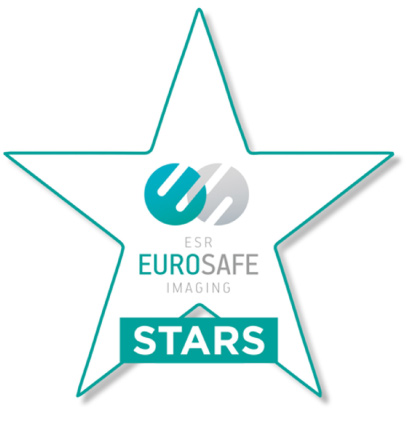HealthManagement, Volume 18 - Issue 3, 2018
Lessons learned from using the European Society of Radiology clinical audit templates in a pilot project at Coimbra Hospital and Universitary Centre (CHUC) together with Coimbra Health School in Portugal.
The EuroSafe Imaging initiative (eurosafeimaging.org) focuses on promoting appropriateness in medical imaging, maintaining doses within diagnostic reference levels, and emphasises the importance of using up-to-date equipment in order to develop a patient safety culture in medical imaging.
One of the secrets of success of EuroSafe Imaging is that for the first time a multidisciplinary and holistic approach was developed under the initiative of the European Society of Radiology (ESR), with the collaboration of stakeholder organisations: European Commission (EC), World Health Organization (WHO), International Atomic Energy Agency (IAEA), Heads of the European Radiological Protection Competent Authorities (HERCA), International Commission of Radiological Protection (ICRP), European Federation of Radiographer Societies (EFRS), European Federation of Organizations for Medical Physics (EFOMP), Cardiovascular and Interventional Radiological Society of Europe (CIRSE), European Society of Paediatric Radiology (ESPR) and the European Coordination Committee of the Radiological, Electromedical and Heathcare IT Industry (COCIR).
With this initiative a new paradigm for radiation protection amongst health professionals was raised, creating a new awareness momentum by shifting from a top-down to a bottom-up approach.
The original EuroSafe Imaging Call for Action number 2, when it was established in 2014, was to develop and promote a clinical audit tool for imaging to increase the quality of patient care and improve justification.
You might also like: The Need for Clinical Audits in Diagnostic Radiology
Clinical audit concept
Clinical audit is a systematic examination or review of medical radiological procedures. It seeks to improve the quality and outcome of patient care through structured review, whereby radiological practices, procedures and results are examined against agreed standards for good medical radiological procedures. Clinical audit is required under the Euratom Basic Safety Standards Directive (Council directive 2013) and therefore mandatory in the EU.
The ESR Clinical Audit Tool aids departments to carry out audit in a more comprehensive manner and thereby comply with the directive by assuring the protection of their patients.
Although Portugal published the legal framework directive 1997), due to the absence of intervention by the health authorities, Portuguese hospitals have not taken any actions towards the implementation of international guidelines or EU directive requirements. Currently Portugal has a) no diagnostic reference levels (DRLs); b) no mandatory education and training in radiation protection; and c) no clinical audit in radiology departments, as defined in the Euratom Directive. At the date of this article, Portugal has also not transposed the Euratom Directive requirements that should have been in place since 6 February 2018. Although most Portuguese hospitals are accredited by Joint Commission International programmes, the majority have no items that assure implementation of the three main pillars of radiation protection: justification, optimisation and dose limitation.
Participating in the pilot project gave us the opportunity to engage better with the clinical audit process concept, mainly by focusing on radiology departments, using a comprehensive library of templates provided by ESR. In our experience, the ESR Audit pack is indeed ‘ALPINE’: Achievable; Local; Practical; Inexpensive; Non-threatening; Easy.
ESR proposed 17 essential audit items to pilot amongst Eurosafe Imaging Stars―those imaging facilities recognised for best practice in radiation protection. We chose five to pilot:
- What
is the mechanism for record keeping and retrospective analysis of adverse
incidents?
- What
is the departmental mechanism to confirm the non-pregnancy status of female
patients?
- Is
there a written protocol for the justification of who is responsible for the
justification process?
- What
mechanism is used to evaluate patient dose in high dose procedures?
- How
old is the equipment in your department?
A very positive aspect of taking part in this ESR pilot was the fact that for the first time a multidisciplinary team was created, involving radiologists, radiographers, medical physicists, students and academia. Integrating audit concepts into the clinical placements of radiography students contributed to easy adaptation and understanding of the audit philosophy. We found that the audit topics are adequate and useful, and use appropriate methods. Mixing hospitals with universities works!
Conclusion
A very important lesson learned from our experience in the pilot is that the secret of success for implementation of clinical audit is the commitment of the head of department. If we fail to have this commitment, the clinical audit process can start but will soon die.
As a final message we consider that whatever you use or do to change and improve your behaviour in a positive way will help you to become better.
Acknowledgments
Prof. Dr. Filipe Caseiro Alves, Director of the Imaging Department, University Centre Hospitals of Coimbra (CHUC); Prof. Dr. Joana Santos, Medical Imaging & Radiotherapy Department, Coimbra Health School.
Further information
- ESR
Clinical Audit information including the Clinical Audit tool
myesr.org/quality-safety/clinical-audit
- EuroSafe
Imaging eurosafeimaging.org

Key Points
- As
a member of the EuroSafe Imaging Stars network, we took part in a pilot of the
European Society of Radiology clinical audit templates
- In
our experience the audit pack is achievable, local, practical, inexpensive,
non-threatening and easy
- A
positive aspect of the pilot was creating a multidisciplinary team of
radiologists, radiographers, medical physicists, students and academics
- The
commitment of the head of department is a critical success factor in
implementing clinical audit
- The
ESR Audit Tool helped us carry out audit in a more comprehensive manner
References:
Council Directive 97/43/Euratom of 30 June 1997 on health protection of individuals against the dangers of ionizing radiation in relation to medical exposure, and repealing Directive 84/466/Euratom. [Accessed: 16 June 2017] Available from eur-lex.europa.eu/legal-content/EN/TXT/?uri=celex%3A31997L0043
Council Directive (EC) 2013/59/EURATOM of 5 December 2013 laying down basic safety standards for protection against the dangers arising from exposure to ionising radiation, and repealing Directives 89/618/Euratom, 90/641/Euratom. eur-lex.europa.eu/legal-content/EN/ALL/?uri=CELEX:32013L0059
European Society of Radiology. ESR Subcommittee on Audit and Standards (2010) Clinical audit-ESR perspective. Insights Imaging 1: 21-6.



